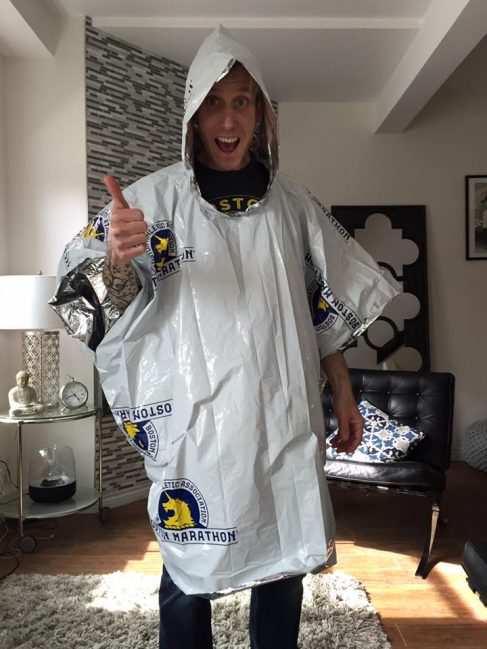Those of you who were fortunate enough to run the BMO Vancouver Marathon were treated to some beautiful weather. The same can not be said for the thousands of runners who lined up for the various races at the GoodLife Toronto Marathon and Mississauga Marathon.
As race weekend grew nearer, my inbox and social media feeds were filling up with messages from runners beginning to get stressed out about the impending nasty weather and how they should best prepare to tackle their respective races. So, instead of addressing a few these questions individually, I thought I would share I how approach racing under less than ‘ideal’ conditions.
- Be Grateful
I truly believe that my worst day running is always better than my best day “not running.” When it comes to training for a half-marathon or marathon, we are well aware that anything can happen during the training cycle—injury, illness, or life circumstances can easily sabotage or sidetrack your goal race. Therefore, if you wake up on race morning and the conditions aren’t ideal for a PB, just remind yourself that no matter how fast you run today, you are still graced by doing something that most people only dream of doing.
- Embrace Your Tribe
Remember when you were kid, and your “dream day” was waking up early on the weekend, hanging out with your friends, and playing in the rain—Well guess what? Now you’re an adult and you get to do just that! When I saw the nasty forecast for Toronto and the GTA, I started using the hashtag #EmbraceTheSuck because I wanted to remind myself that no matter what the weather is, I will make certain I enjoy hanging out with my running mates. And don’t forget to take lots of prerace photos and “soggy” after-race photos so that you can show just how #BadAss you and your running friends really are!
- Arrive Prepared
When it comes to racing in poor conditions, one of the worst things you can do is to unnecessarily suffer the elements before the race even begins. Make sure you arrive to the start of the race wearing lots of warm layers, and rainproof protection. You can lose a lot of energy trying to keep warm, and that will be valuable energy you will need to enlist once the race begins.
- Race In The Moment
Game plans and tactical visualization are critical elements of any successful training plan; however, when conditions during a race start to deteriorate, it may be wise to defer to a more appropriate strategy of “racing in the moment”. Be responsive to the conditions you are currently facing—if it starts to heat up quickly, you will need to adjust your pace accordingly. And as was the case at the Goodlife Toronto Marathon, runners encountered moderate rain throughout the race that contributed to an increased risk of blisters, chafing, and mild hypothermia at the end of the race. But what proved to be the biggest racing obstacle was the severe wind gusts during the last 9km of the race. As runners hit the final turn-around, it became increasingly apparent that PBs and target times were slipping away. My response to facing a strong headwind is the same strategy I use for ascending a steep hill—Instead of getting hung-up on the idea of maintaining my per-kilometer race pace, I focus on maintaining the same perceived effort. No doubt, this will lead to a drop in your actual pace, but you will avoid bonking and having to walk later in the race.
- Smile In That Finishing Photo
And last but not least… No matter how much you’ve suffered out on the course… No matter how cold, wet, or exhausted you are… When you get to the final 100 meters of the race, don’t forget to look up and smile for the photographers at the finish line. Show everyone, including yourself, what a running warrior you are! Nothing can stop you…. Nothing!

Send your advice and questions to JP runjprun@gmail.com. Want more tips, tricks and practical advice from JP Bedard? Check out his previous posts with questions from elite and everyday athletes.






 Current Issue
Current Issue Previous Issue
Previous Issue Prior Release
Prior Release

Great advice! Being prepared to modify a race goal because of conditions on course is so important. At a very windy Hamilton marathon this past fall I tried to run at my goal pace despite strong winds. Unsurprisingly, I was burned out at 30 km. I was initially disappointed, but I learned from the experience.
I would also advise not being stingy with anti-chafe products if running in the rain!